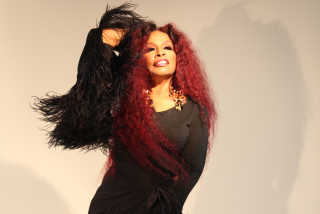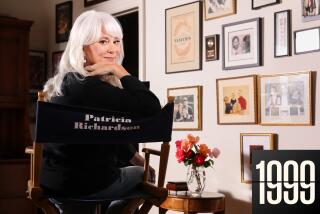Art market flourishes amid turmoil
Art is hot.
Despite turmoil in the financial markets, there are no signs that the art market is softening.
The fall auction season in New York saw robust prices across most categories, with postwar and contemporary works in particular going through the roof. It seemed like a record was being shattered every time an art auction was held.
This record haul generated billions of dollars for auction houses such as Sotheby’s, contributing to solid earnings but also exposing auctioneers to volatility when sales didn’t go as well as expected.
The reason for the art market’s strong showing? The weak dollar, expanding world wealth and new buyers from countries not previously associated with the art collecting community, experts say. Over the last five years, wealthy buyers from Russia, China, India and the Middle East have greatly helped fuel the art market.
The boom has occurred against the backdrop of a dreadful year for the financial sector in the U.S. -- a slump that seems to have been offset by the influx of foreign buyers and big American buyers who have not been affected by the uncertain economy.
These buyers paid astronomical amounts for art. An Andy Warhol painting sold for more than $71 million in a May auction that brought in a total of nearly $385 million. A Matisse fetched more than $33.6 million in a November sale that also took in nearly $400 million. A limestone lion sculpture just 3 1/4 inches tall hauled in $57 million this month.
Still, the art market hasn’t been immune to turbulence.
Sotheby’s suffered a lackluster modern and Impressionist sale in November in which Van Gogh’s “The Fields,” estimated at $28 million to $35 million, failed to sell and many other works sold below their estimates.
Sotheby’s stock plunged 28% that day because of investors’ fears that the company had overextended itself in guaranteeing sellers’ reserve, the price the house promises to pay if a certain item doesn’t sell.
“What the market was saying was that the property being offered was very heavily estimated and the quality was not there to support this value,” said Ian Peck, chief executive of art finance firm Art Capital Group.
“If you try to sell stuff for twice what it’s worth, the market’s going to say no,” said Peck, adding that he heard that the Van Gogh later sold privately for about $20 million.
Peck says his blanket advice to clients is to take a wait-and-see approach for the next year to see how the art market plays out. “Our view is that within 12 months we’ll know if this thing is getting worse, meaning if a recession occurs in the U.S. market or not.”
Generally, the art market trails the Dow Jones industrial average and other market indexes by about six to eight months, Peck said. And stocks have been volatile, with big swings up and down, since the summer.
But he was optimistic that the art market would ride out the crisis, and noted that his firm, which is essentially a private banker for art buyers, has seen a surge in loan applications to buy art.
And people at auction houses aren’t really seeing much of a downturn because of problems on Wall Street.
“If you look around, particularly in New York, it seems like everyone’s a billionaire and they don’t seem to be affected terribly by this credit crunch,” said David Nash, of Mitchell-Innes & Nash, a private New York art consultant firm and gallery specializing in Impressionist, modern and contemporary masters.
Although art from all eras is selling well, works by modern masters such as Warhol and Mark Rothko and living artists such as Richard Prince and Damien Hirst are especially hot.
In oil-producing countries such as the United Arab Emirates, the appetite is for modern American works by such artists as Keith Haring, Jean Michel Basquiat and Warhol, Peck said.
“The most money is chasing these modern and contemporary names, and that’s just what’s in fashion, really,” Peck said, adding that buyers with new money from Russia and China have a “limitless appetite for Western art and objects. Prices in some cases have doubled or tripled in the past year.”
More to Read
The biggest entertainment stories
Get our big stories about Hollywood, film, television, music, arts, culture and more right in your inbox as soon as they publish.
You may occasionally receive promotional content from the Los Angeles Times.






